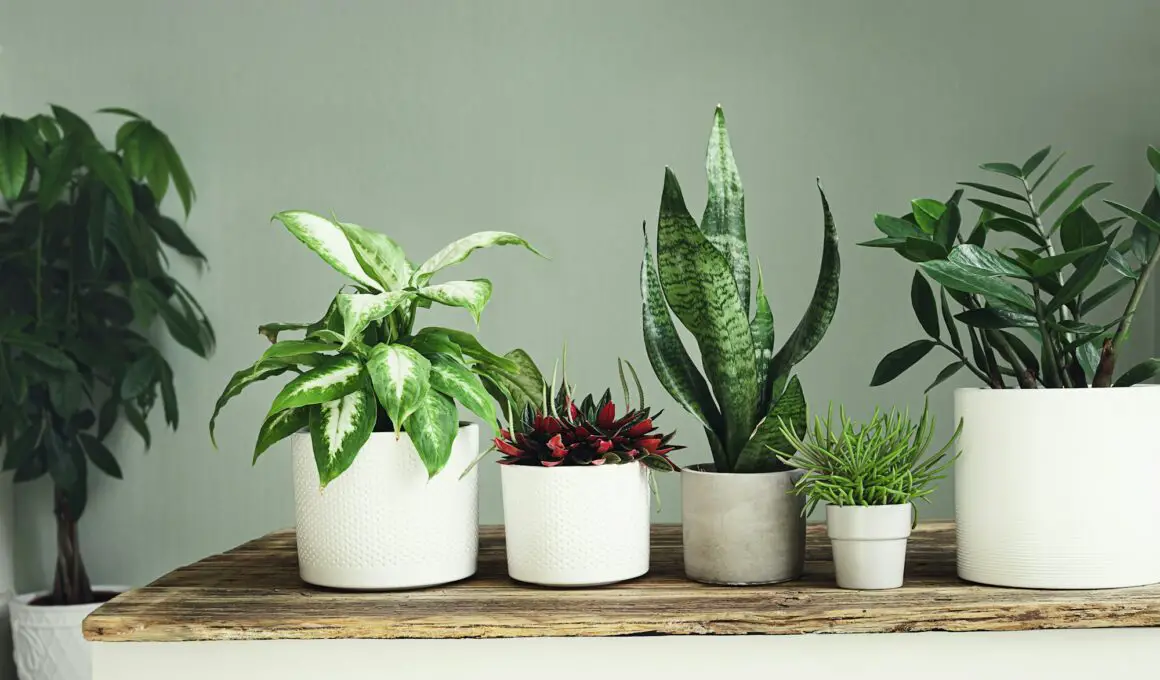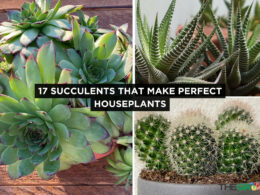In This Article Show
With over a decade of gardening experience, I’ve learned that the key to a vibrant indoor garden lies not only in the flowers but also in the leaves themselves. Plants with striking leaves bring a lively burst of nature to our homes and offer a refreshing change from the typical greenery.
Houseplants are not just about decoration; they can also purify the air we breathe and create a more relaxing, serene environment. From the lush, broad leaves of the Rubber Plant to the intricate patterns of the Calathea, each plant has its personality and benefits.
Today, we’ll explore 18 houseplants that are particularly known for their unique and eye-catching foliage. These plants are chosen for their beauty and their ability to adapt to indoor conditions, making them perfect for any home or office.
Houseplants With Striking Foliage
Whether you are a seasoned plant lover or just starting your indoor garden, these foliage champions are sure to impress. So, let’s get started and discover the perfect leafy companion for your space!
1. Calathea (Prayer Plant)
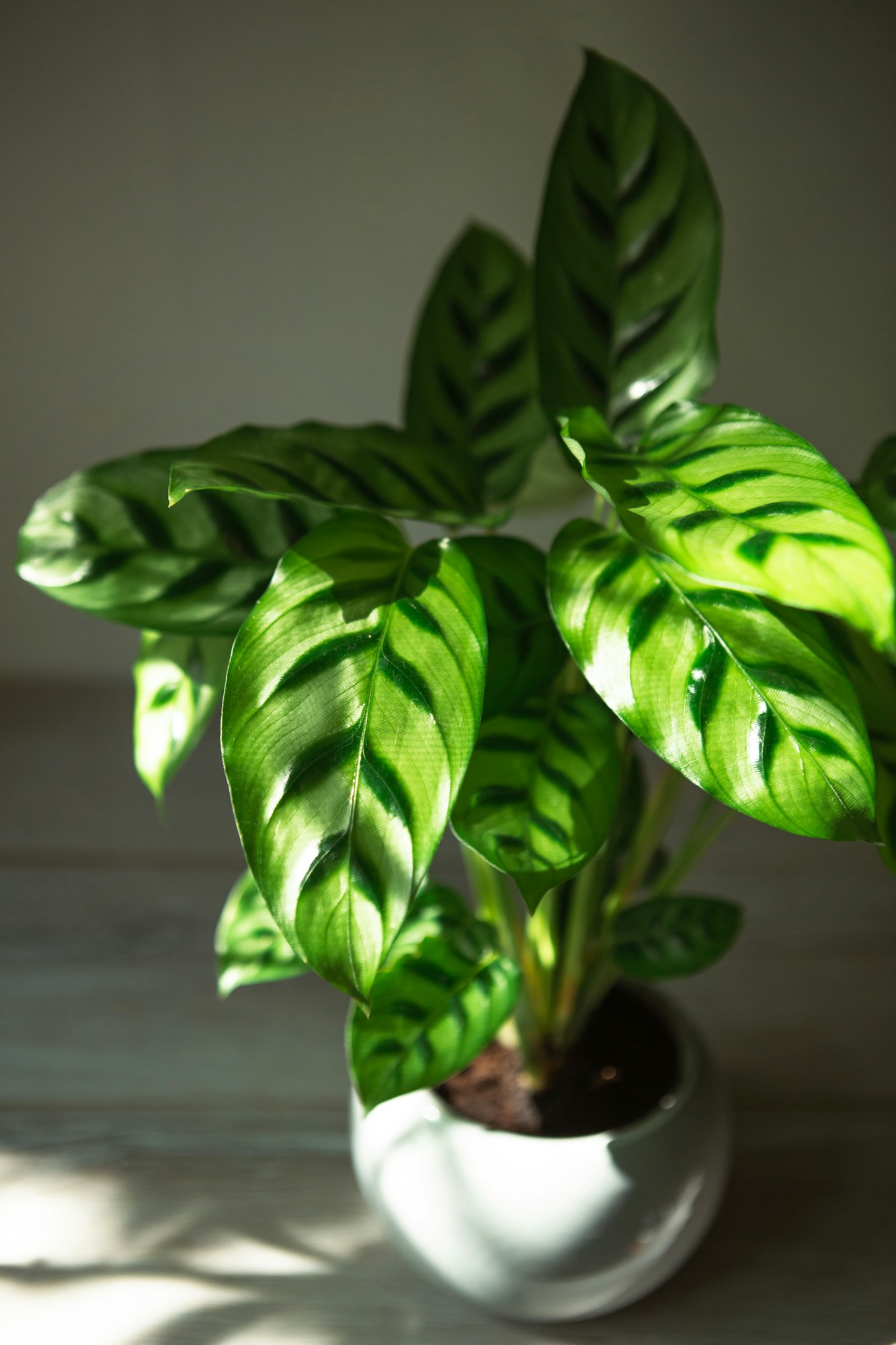
Calatheas are truly the showstoppers of the indoor plant world, renowned for their beautifully patterned leaves. Each variety displays a unique design, from peacock markings to intricate stripes and shapes, with colors ranging from deep greens to rich purples. Thriving in indirect light, Calatheas are perfect for spots away from direct sunlight, which can fade their vibrant patterns.
They prefer humid environments, so consider placing them in kitchens or bathrooms if you can, or use a humidifier to mimic their tropical native habitat. Keep their soil consistently moist, but be wary of overwatering.
Get Gardening For Beginners
Our new EBOOK shows newcomers and green thumbs alike a step by step guide to growing the garden of their dreams.
2. Ficus elastica (Rubber Plant)
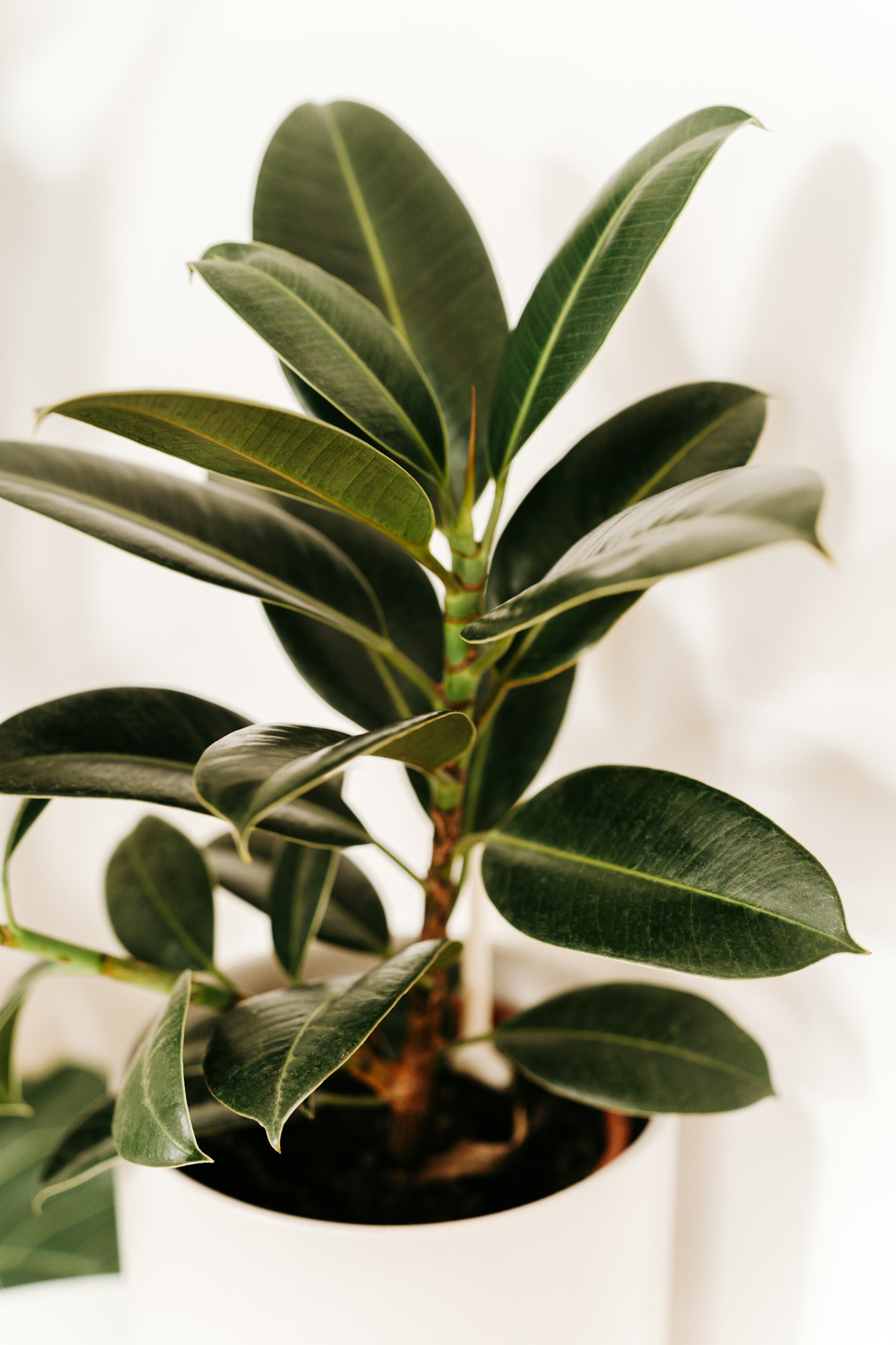
The Rubber Plant is a robust houseplant with glossy, broad leaves that can grow quite large. It comes in several color variations, including deep green, burgundy, and even variegated types, adding a sophisticated touch to any interior space.
To keep your Ficus elastica healthy, place it in a well-lit area but out of direct sunlight, which can scorch its leaves. Water moderately—allowing the top inch of soil to dry out between waterings—and mist occasionally to increase humidity. This plant also benefits from a monthly leaf cleaning to keep its leaves shiny and healthy.
3. Monstera deliciosa (Swiss Cheese Plant)
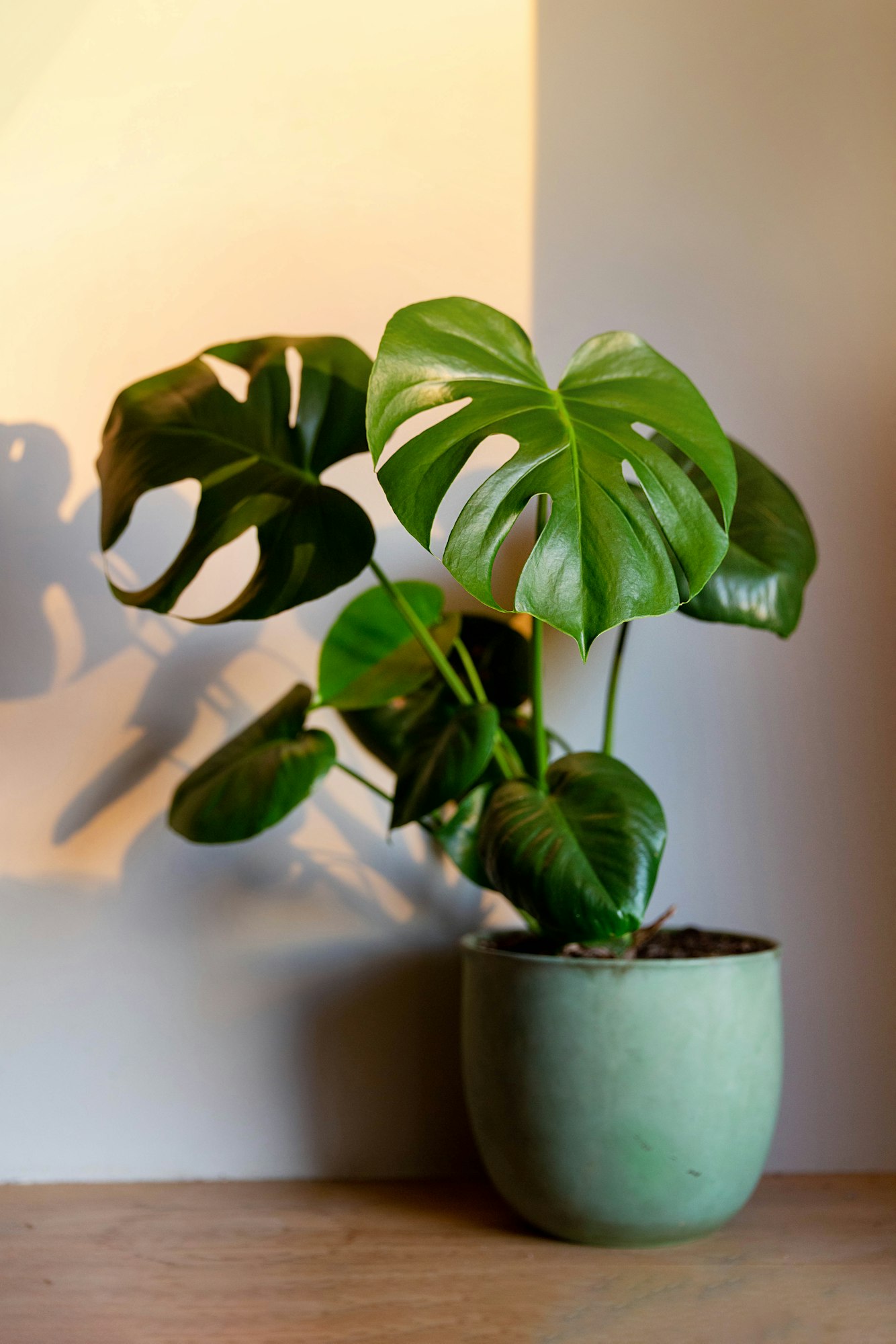
Perhaps one of the most iconic foliage plants, the Monstera deliciosa is loved for its dramatic leaves with natural holes, known as fenestrations, which make it a favorite among plant enthusiasts. These perforations help the plant withstand strong winds in its natural environment and add an exotic flair indoors.
Monsteras do best in bright to medium indirect light, though they can tolerate lower light levels. They prefer their soil to be somewhat dry between waterings, and they benefit from regular mistings to mimic the humid, tropical conditions they originate from. As they grow, providing a moss pole or support will help them maintain their striking vertical presence.
4. Alocasia (Elephant Ear)
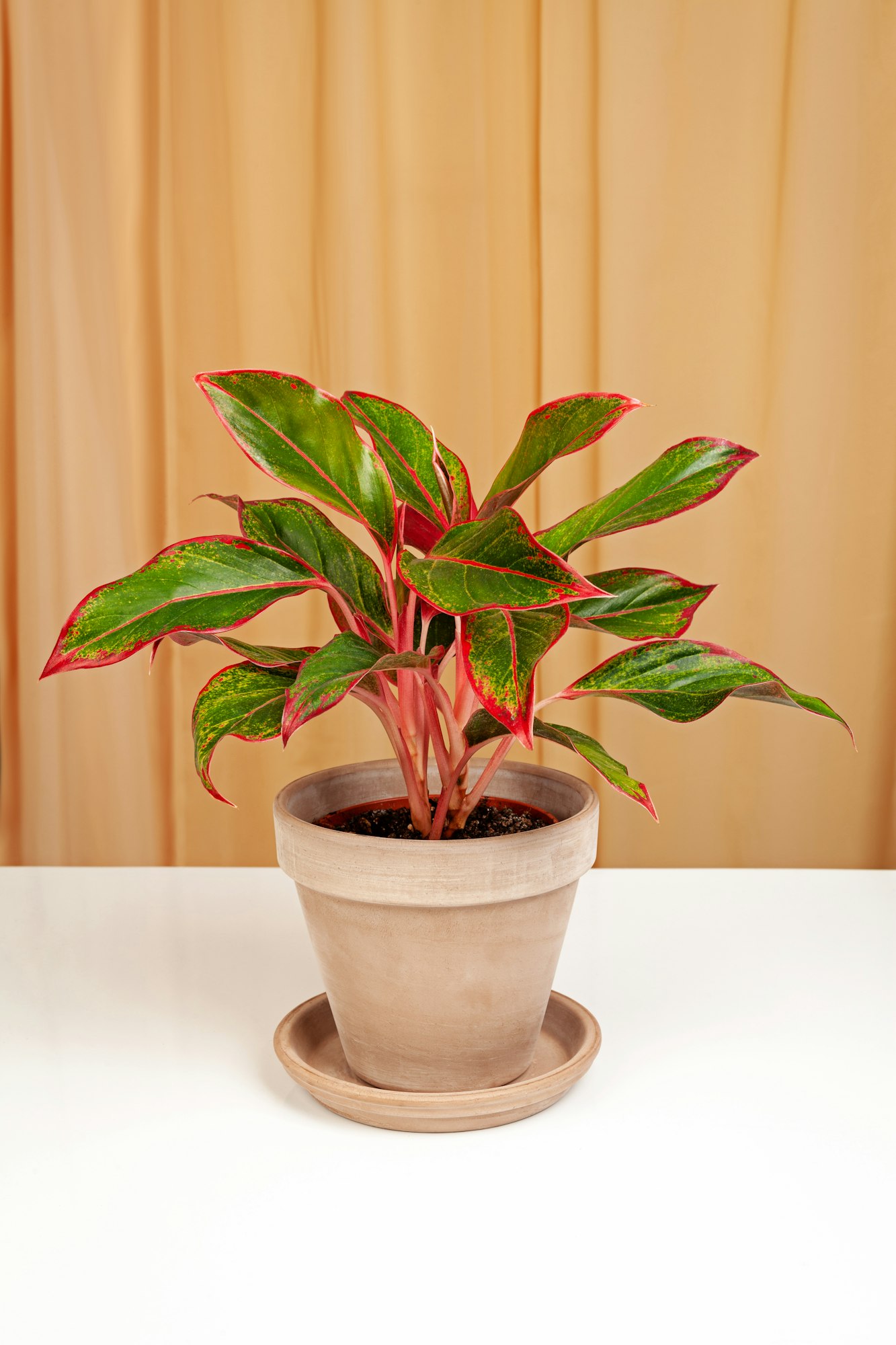
Alocasia plants are striking for their large, arrow-shaped leaves, which can stand several feet tall, giving them a bold and dramatic presence. Their veins often contrast vividly against the leaf color, adding to their visual impact.
Alocasias thrive in high-humidity environments and prefer a well-draining, peat-rich potting soil. They should be kept moist but not waterlogged. Placing them in bathrooms or using a humidity tray can help meet their moisture needs. It’s important to avoid direct sunlight, as it can scorch their delicate leaves.
5. Pilea peperomioides (Chinese Money Plant)
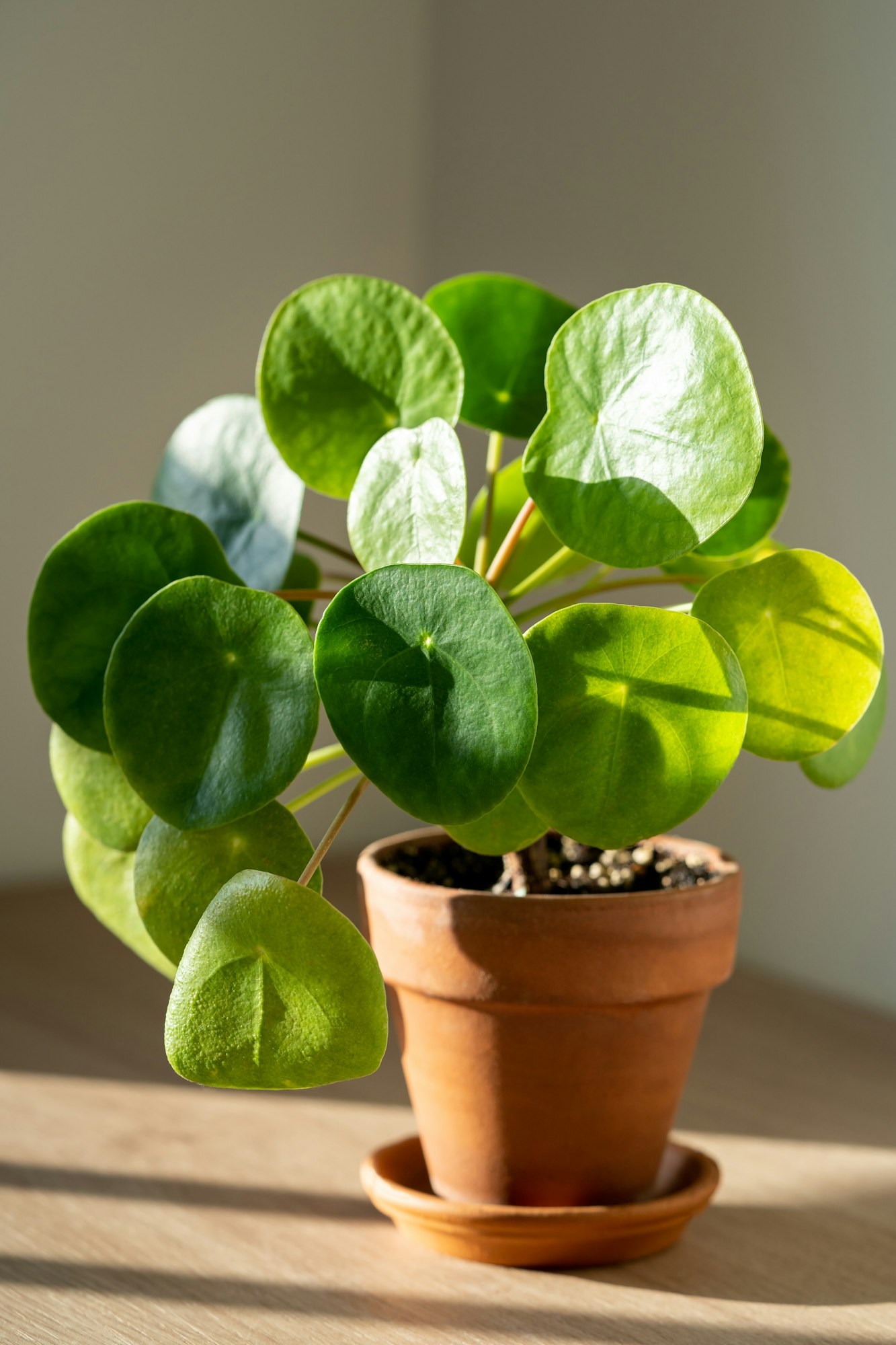
Known for its charming, coin-like round leaves that sit on long petioles, the Pilea peperomioides add a whimsical and modern touch to any room. The leaves are bright green and have a glossy finish that catches the light beautifully.
Get Gardening For Beginners
Our new EBOOK shows newcomers and green thumbs alike a step by step guide to growing the garden of their dreams.
This plant prefers bright, indirect light and can suffer if the light is too low, causing its stems to elongate awkwardly. Water it when the top inch of the soil feels dry, but be careful not to overwater. Rotate your Pilea occasionally to ensure even growth, as it tends to grow towards the light.
6. Begonia rex
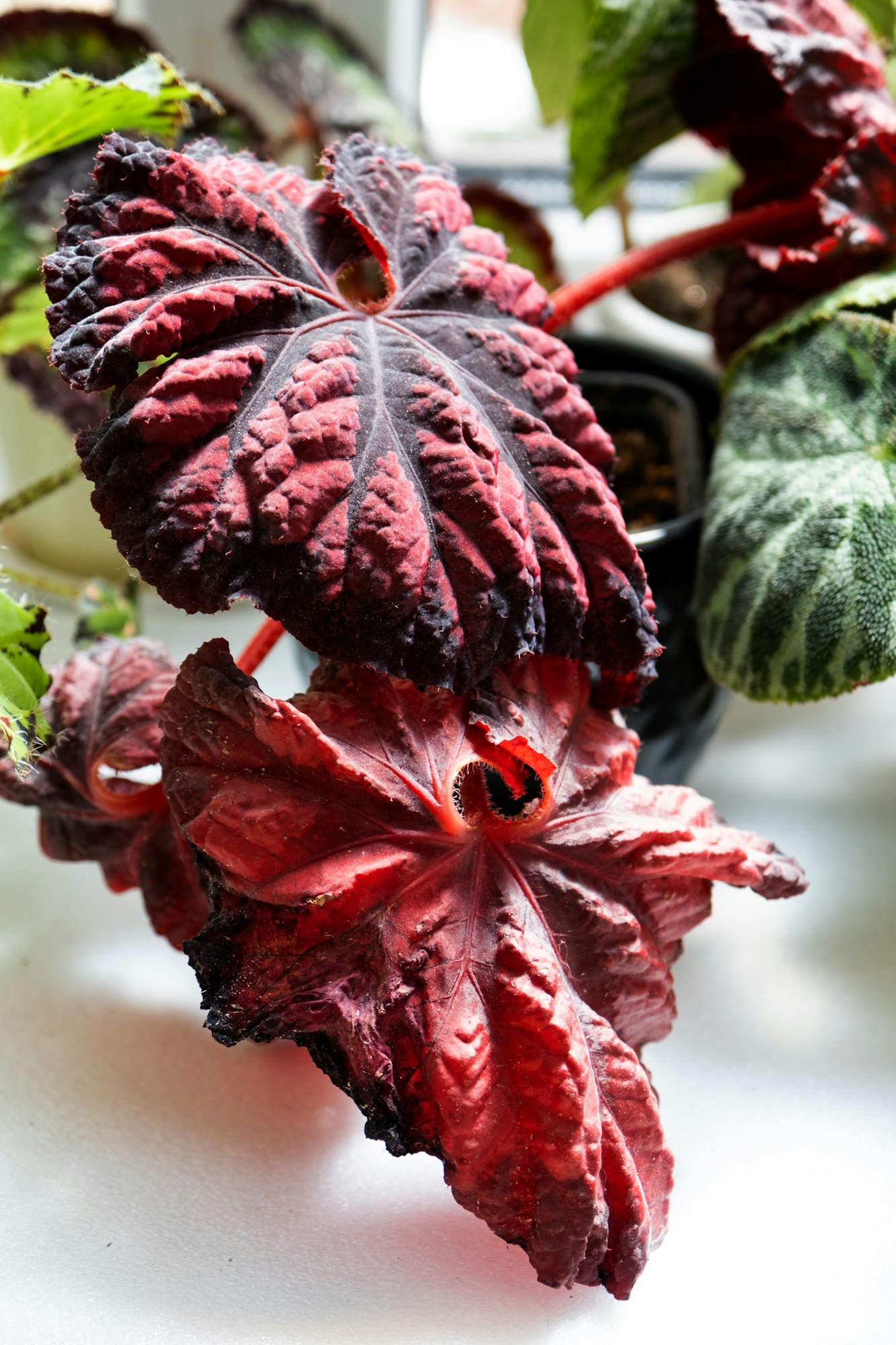
Begonia rex is celebrated for its stunning foliage, which showcases a variety of colors and patterns. Leaves can feature swirls of silver, purple, red, and green, making it a vibrant addition to any indoor plant collection. This plant prefers a humid environment and well-draining soil.
It’s important to allow the top layer of soil to dry out before watering again to prevent root rot. Begonias benefit from reduced watering in the winter months. Bright, indirect light without direct sun is ideal to prevent leaf burn and maintain vibrant colors.
7. Aglaonema (Chinese Evergreen)
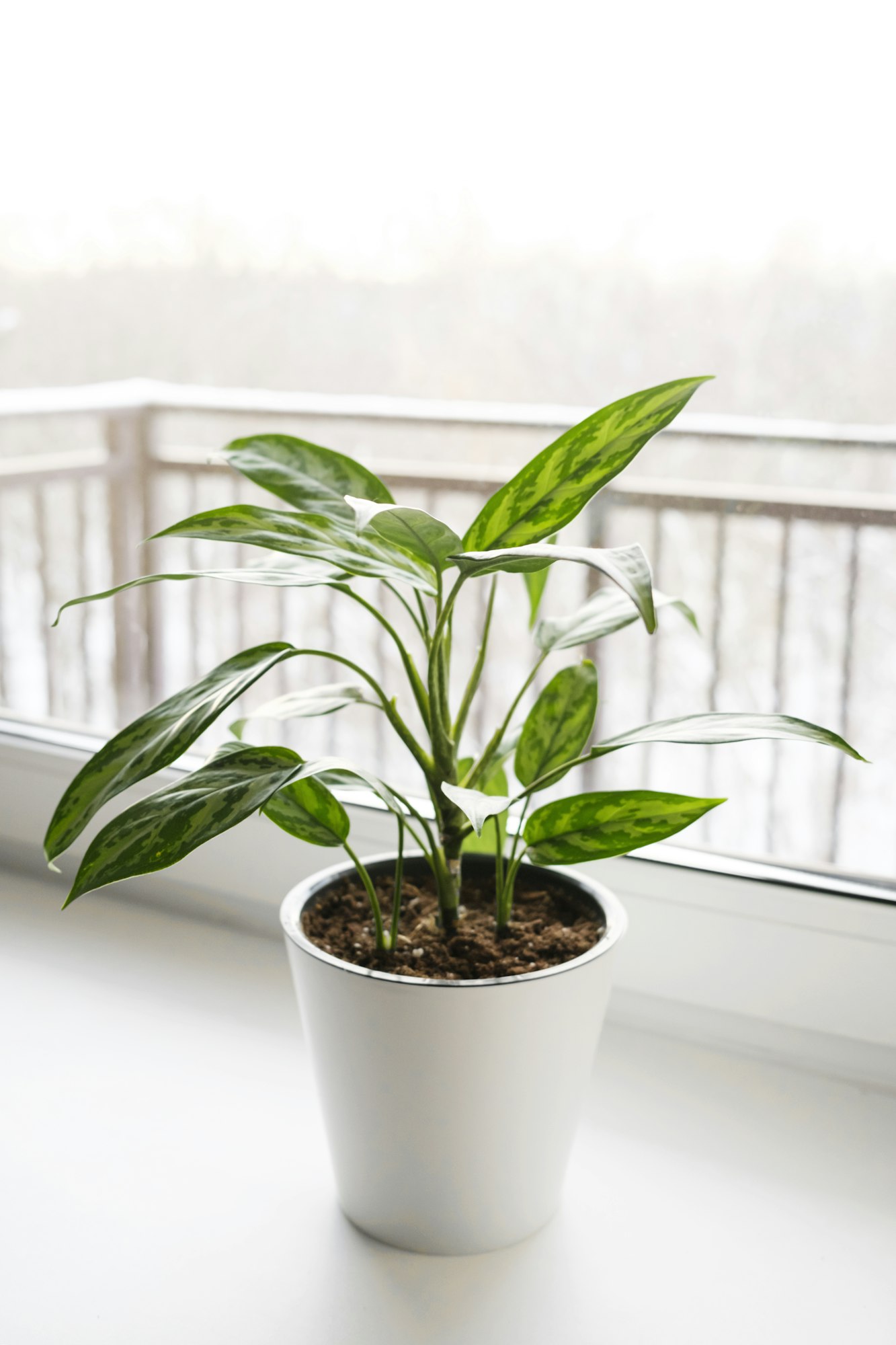
Aglaonema is highly valued for its attractive, easy-to-care-for foliage, which comes in various shades of green, silver, pink, and red. The leaves are often lush and large, adding a splash of color to low-light areas of your home.
Chinese Evergreen plants are among the easiest houseplants to care for, tolerating a wide range of lighting conditions, including low light. They prefer slightly moist soil but are forgiving if you occasionally forget to water. To keep the foliage vibrant, wipe the leaves with a damp cloth periodically to remove dust.
8. Philodendron
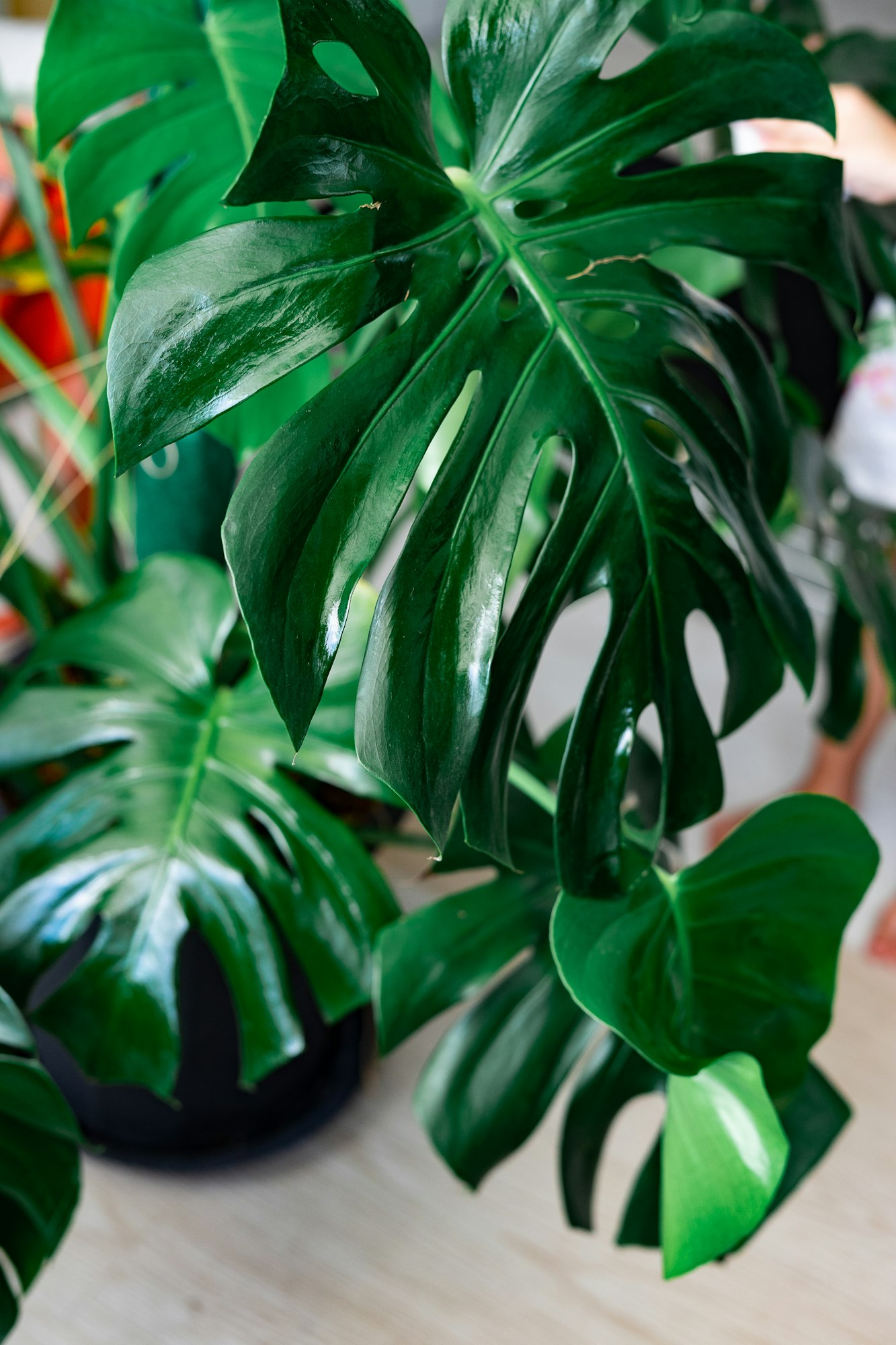
Philodendrons come in climbing and non-climbing varieties, each with distinctive leaf shapes and sizes. Popular types include the Heartleaf and Xanadu, both known for their lush and vibrant green foliage. These plants thrive in medium to bright indirect light but can adapt to lower light conditions.
They prefer their soil to be kept moist but not soggy. Regular pruning helps maintain their shape and promotes fuller growth. Provide a support structure for climbing varieties to encourage vertical growth.
9. Croton
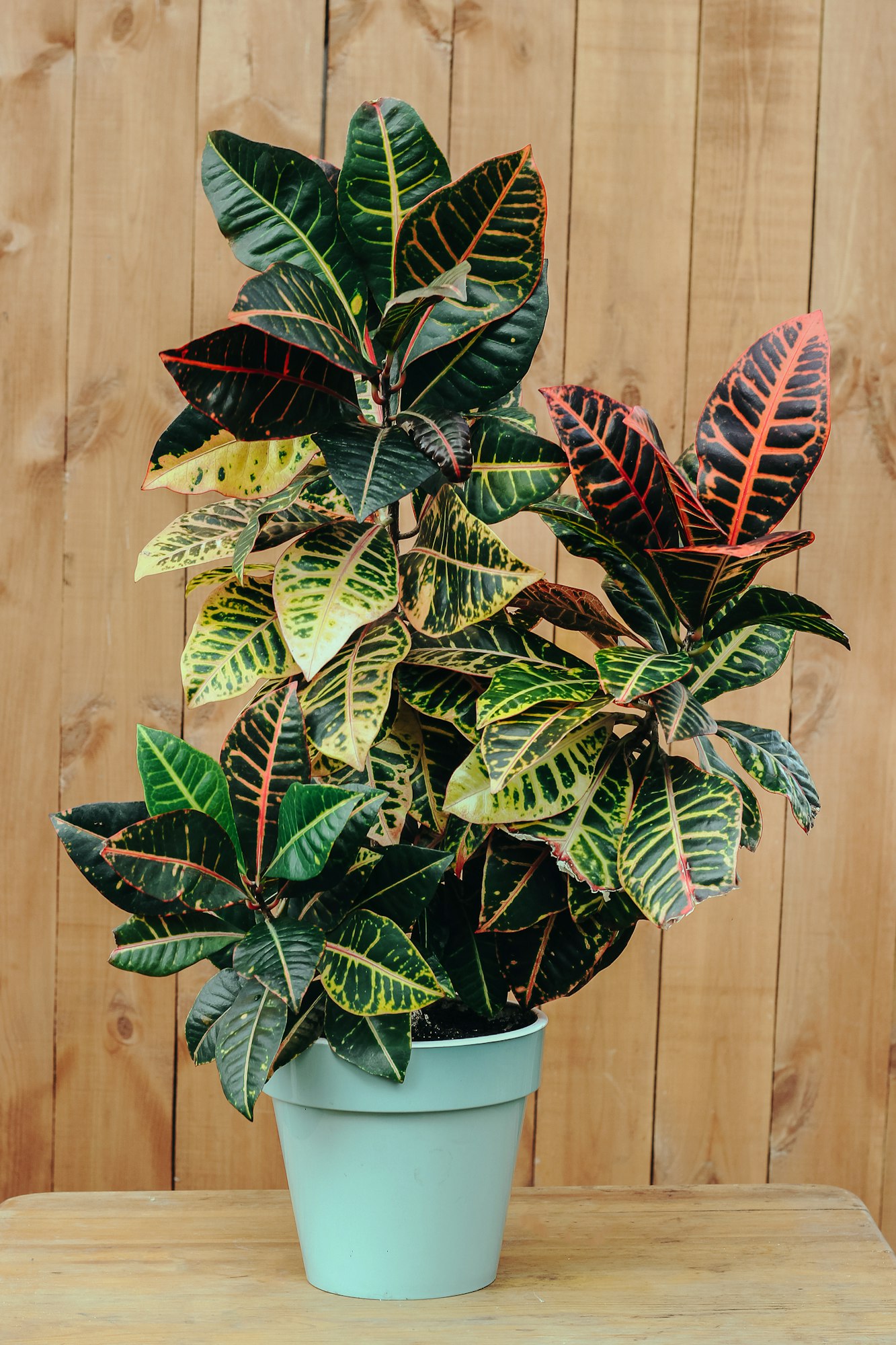
Croton plants are known for their spectacularly colored leaves, which can include shades of yellow, red, orange, and deep green, often all on one leaf. The colors become more vibrant with adequate lighting. To enhance leaf color, place Crotons in a location with bright, indirect light.
They require the soil to be consistently moist, so regular watering is necessary. However, good drainage is crucial to prevent root rot. Crotons also benefit from regular misting to maintain humidity levels.
10. Dracaena
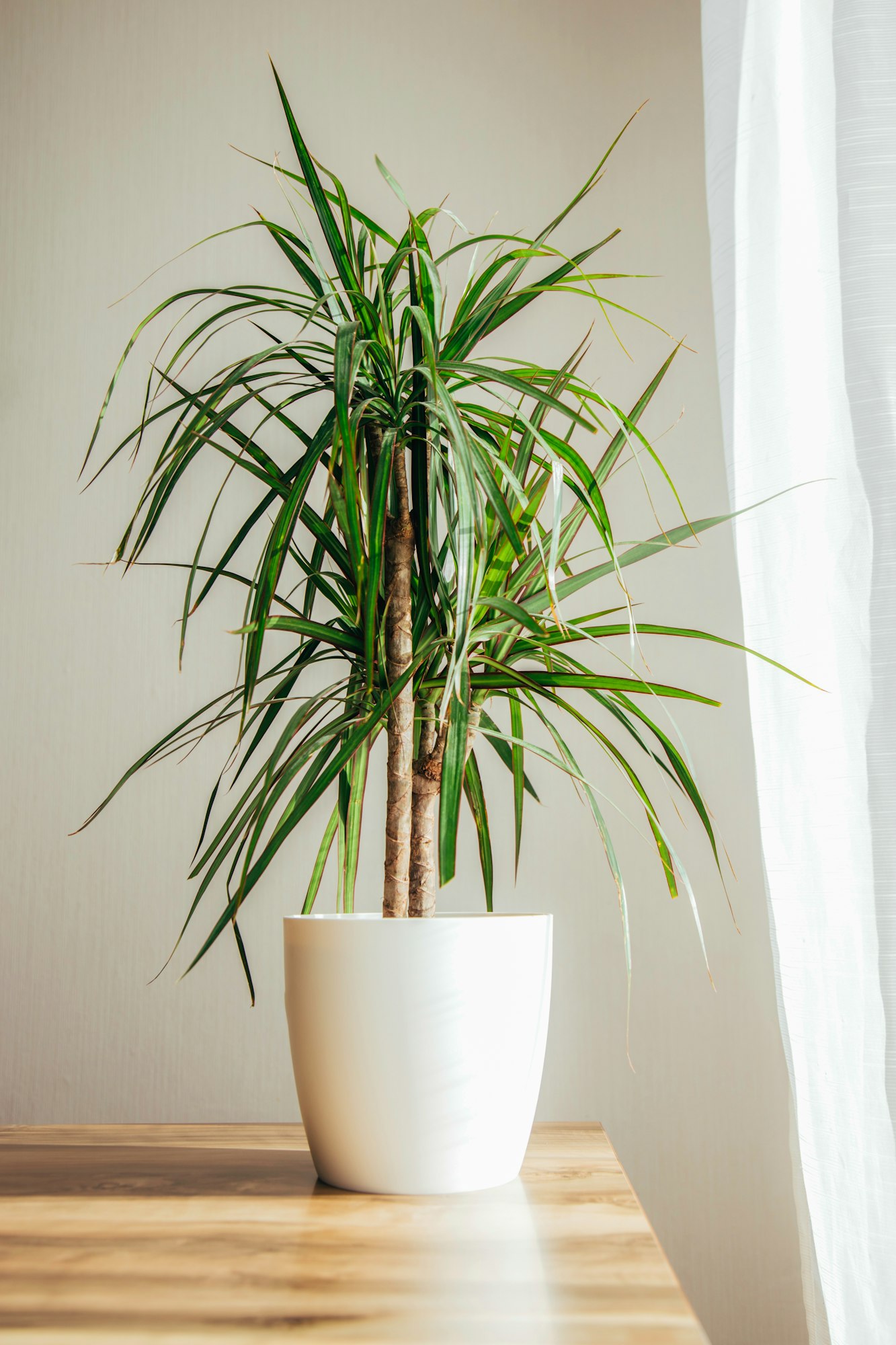
Dracaena species are recognized for their striking leaf shapes, which can be long and striped with vibrant greens, yellows, and even reds. Their upright growth habit makes them ideal as floor plants in home or office settings.
Dracaenas prefer bright, indirect light but can tolerate lower light conditions, making them versatile for various indoor spaces. Water them when the top soil becomes dry to the touch, but be cautious of overwatering, as they are susceptible to root rot. Avoid fluoride and salts in water, which can cause leaf browning.
11. Coleus
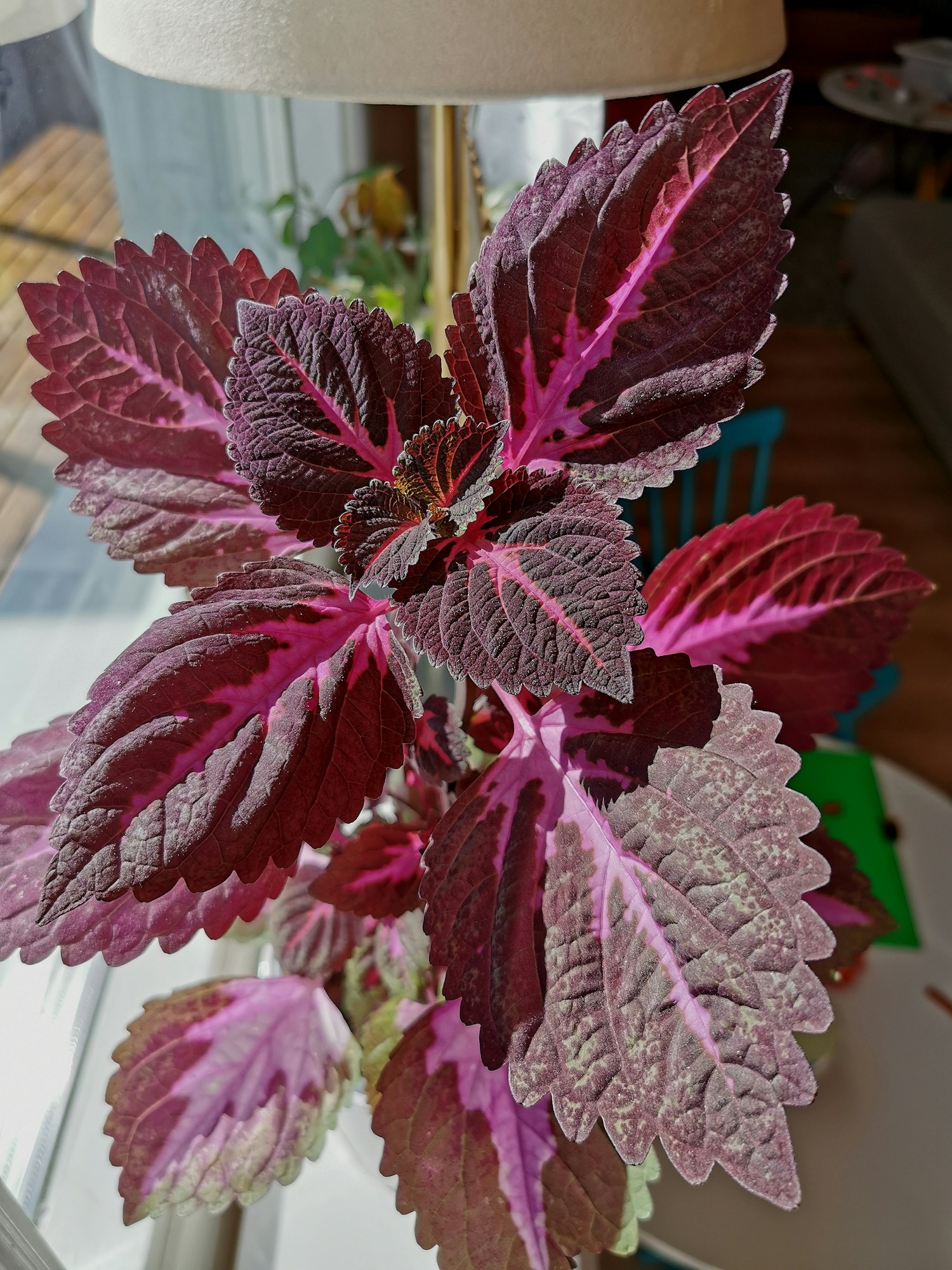
Coleus is famed for its multicolored and patterned foliage, which comes in hues of pink, purple, red, and yellow. Its leaves can provide a continuous display of color even when not in bloom. To keep the colors vibrant, place Coleus in a spot with bright, indirect light.
They can be grown in both pots and as bedding plants outdoors during warmer months. Coleus prefers moist, well-draining soil and regular feeding during the growing season. Pinch back the tips to encourage bushier growth.
12. Ferns (e.g., Boston, Maidenhair)
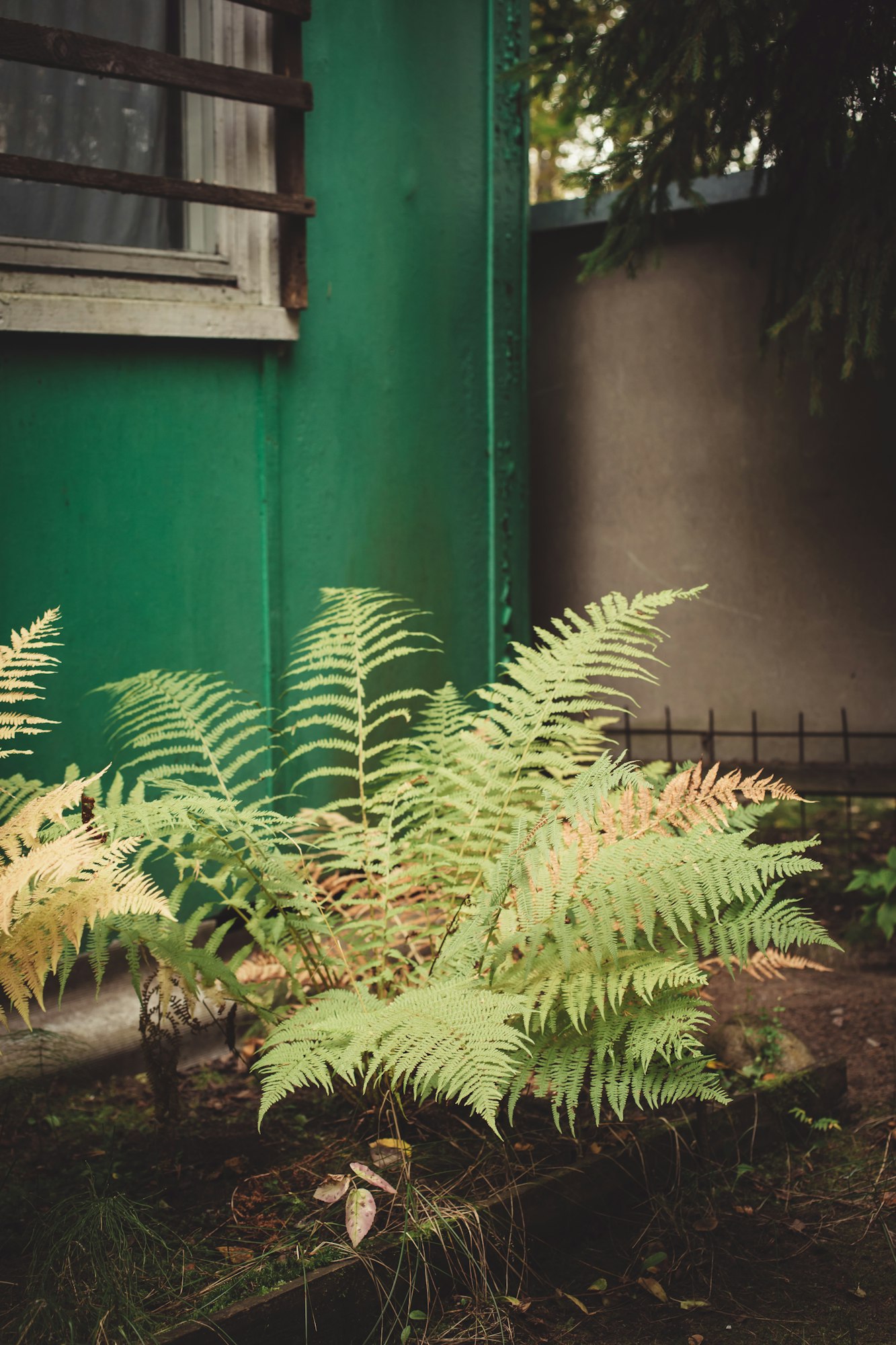
Ferns add a soft, lush greenery to any space with their delicate fronds and graceful growth. They can enhance the humidity of a room, making them beneficial for homes in drier climates. Ferns thrive in high humidity and consistent moisture, making them perfect for bathrooms or kitchens. They prefer indirect light and cooler temperatures. Regular misting and a pebble tray with water can help maintain the necessary humidity.
13. Peperomia
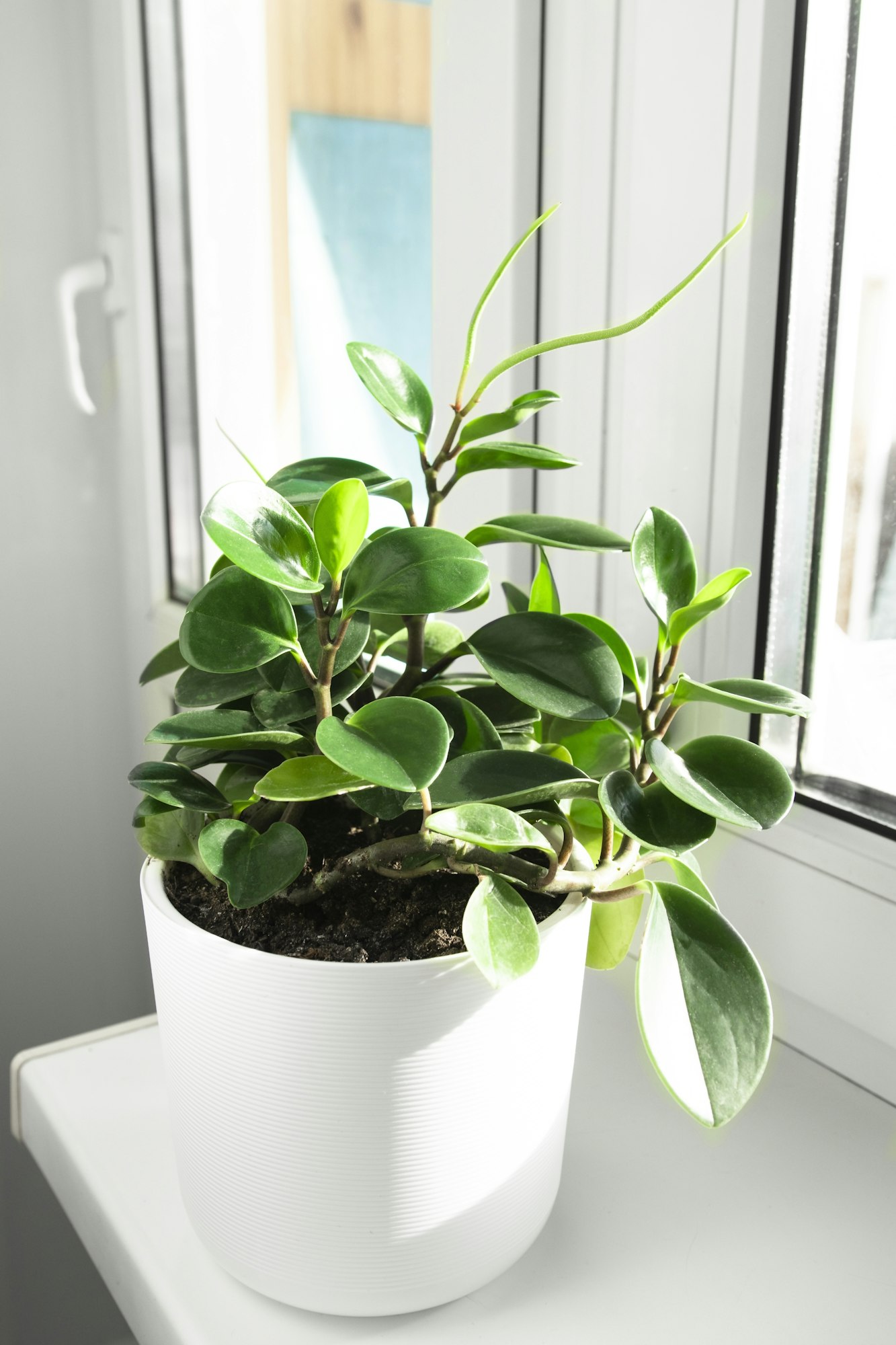
Peperomia plants come in an array of textures and colors, with leaves that might be ridged, smooth, or even heart-shaped. This diverse genus includes varieties like the watermelon Peperomia and the ripple Peperomia, each offering unique visual interest.
Peperomias are low-maintenance, preferring indirect, moderate light, and occasional watering when the soil dries out. Overwatering should be avoided to prevent root rot. They are ideal for office environments or homes due to their easy-care nature.
14. Stromanthe triostar
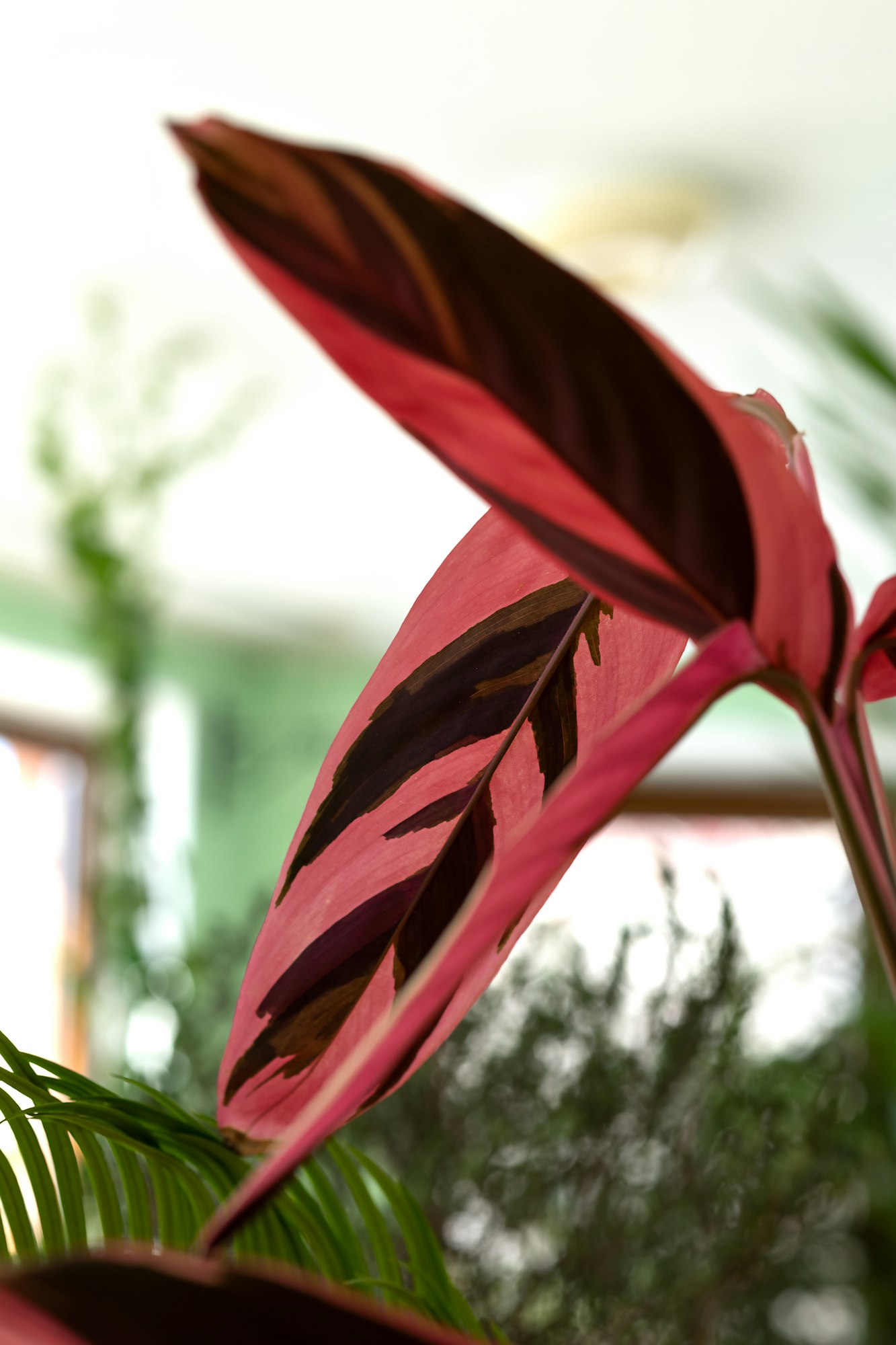
The Stromanthe triostar is renowned for its stunning leaf contrasts, featuring shades of pink, green, and white. It’s a perfect choice for adding a splash of color to any indoor plant collection. This plant thrives in humid environments and should be kept away from direct sunlight, which can fade its vibrant colors. Maintain consistently moist soil and provide high humidity through regular misting or a humidifier.
15. Spathiphyllum (Peace Lily)
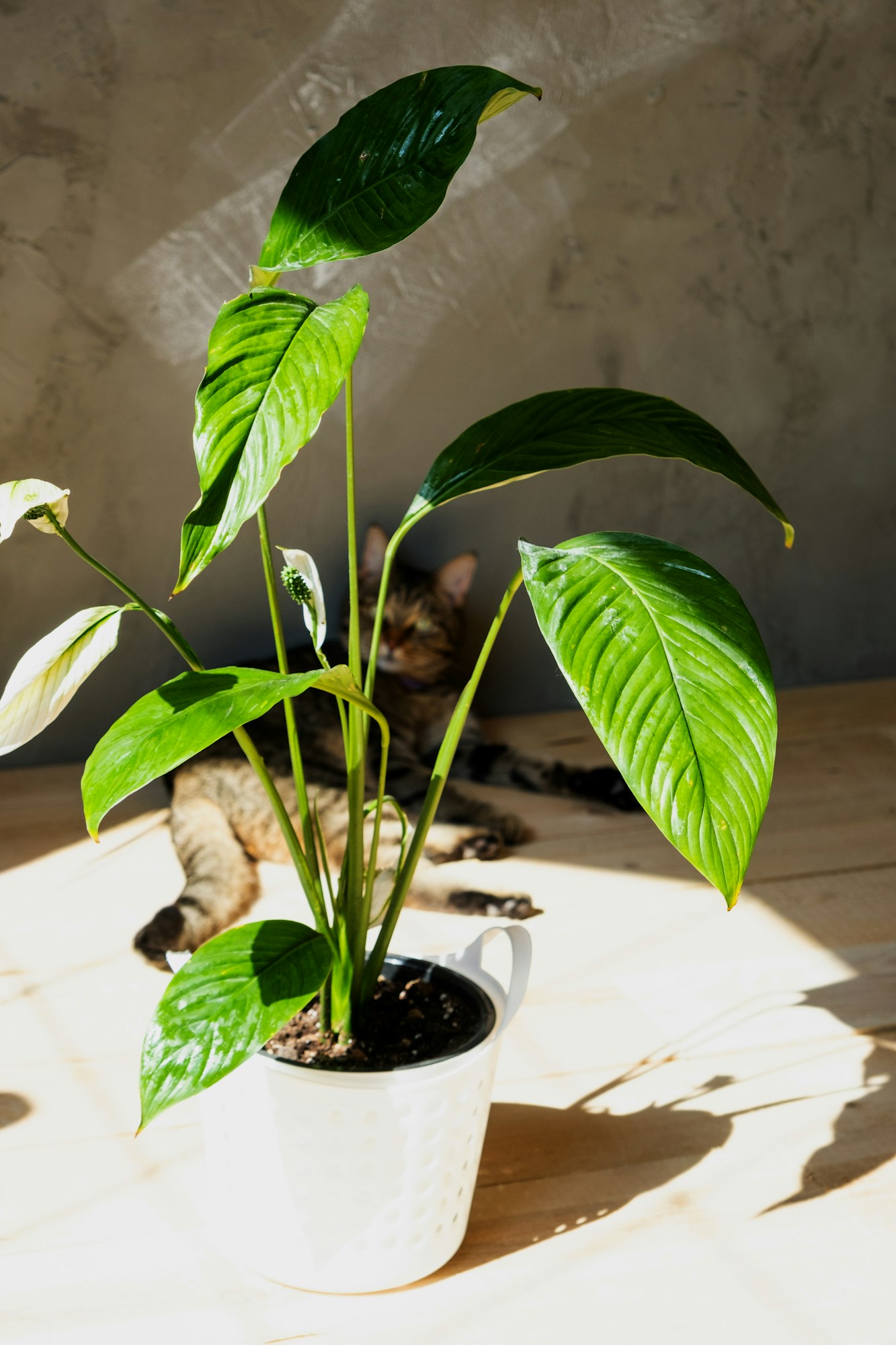
Peace Lilies are beloved not just for their elegant white flowers but also for their glossy green leaves that can brighten low-light areas of your home. Peace Lilies prefer low to medium light and should be watered when the top inch of soil feels dry. Be careful not to overwater, as they are sensitive to soggy soil. A weekly misting can help replicate the humid conditions they enjoy.
16. Dieffenbachia
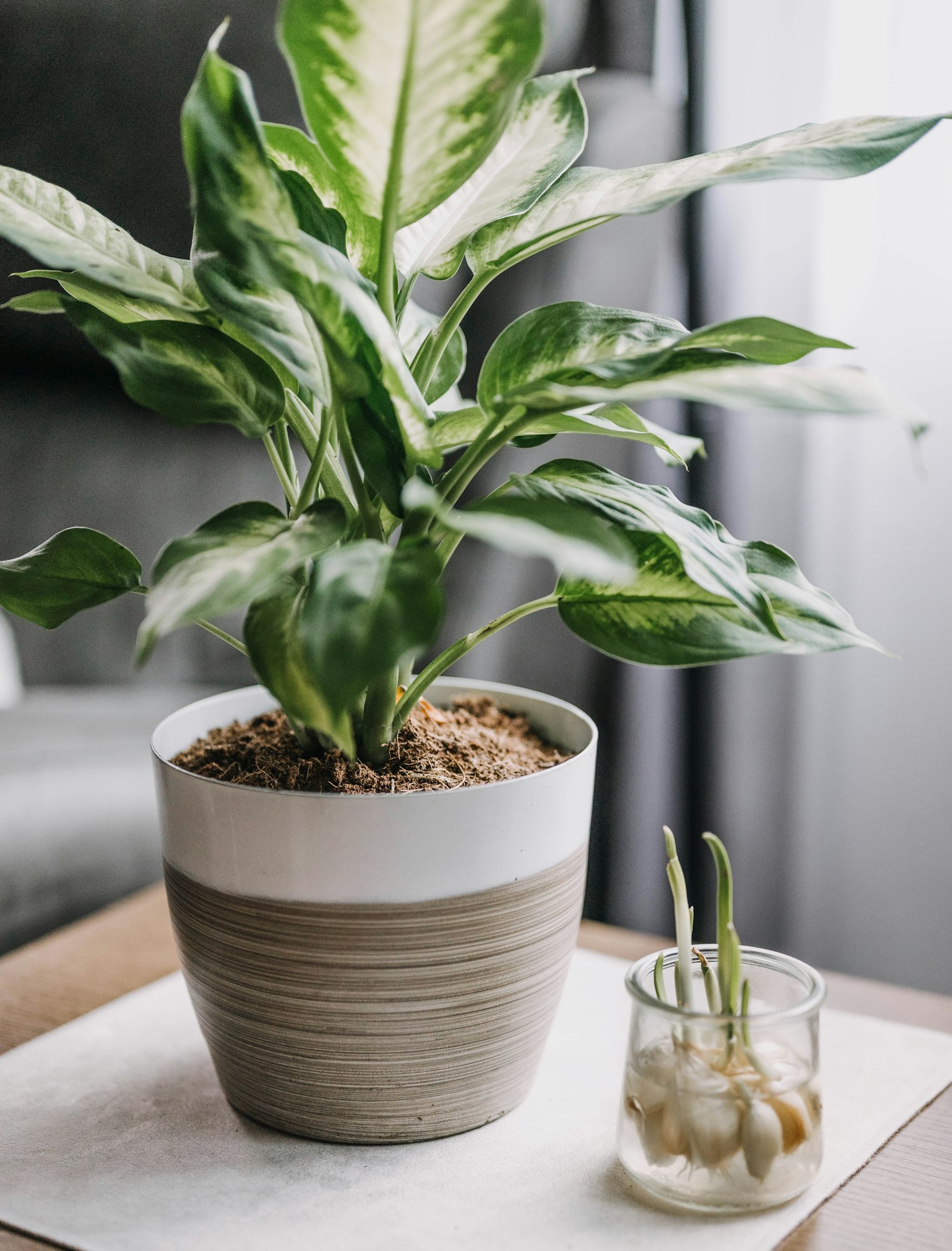
Known for its large, patterned leaves which feature a mix of cream, white, and green, Dieffenbachia adds a tropical flair to any interior setting. This plant prefers filtered light and moderate watering, with the soil allowed to dry between waterings. Note that Dieffenbachia is toxic if ingested, so it should be kept away from pets and children.
17. Hoya (Wax Plant)
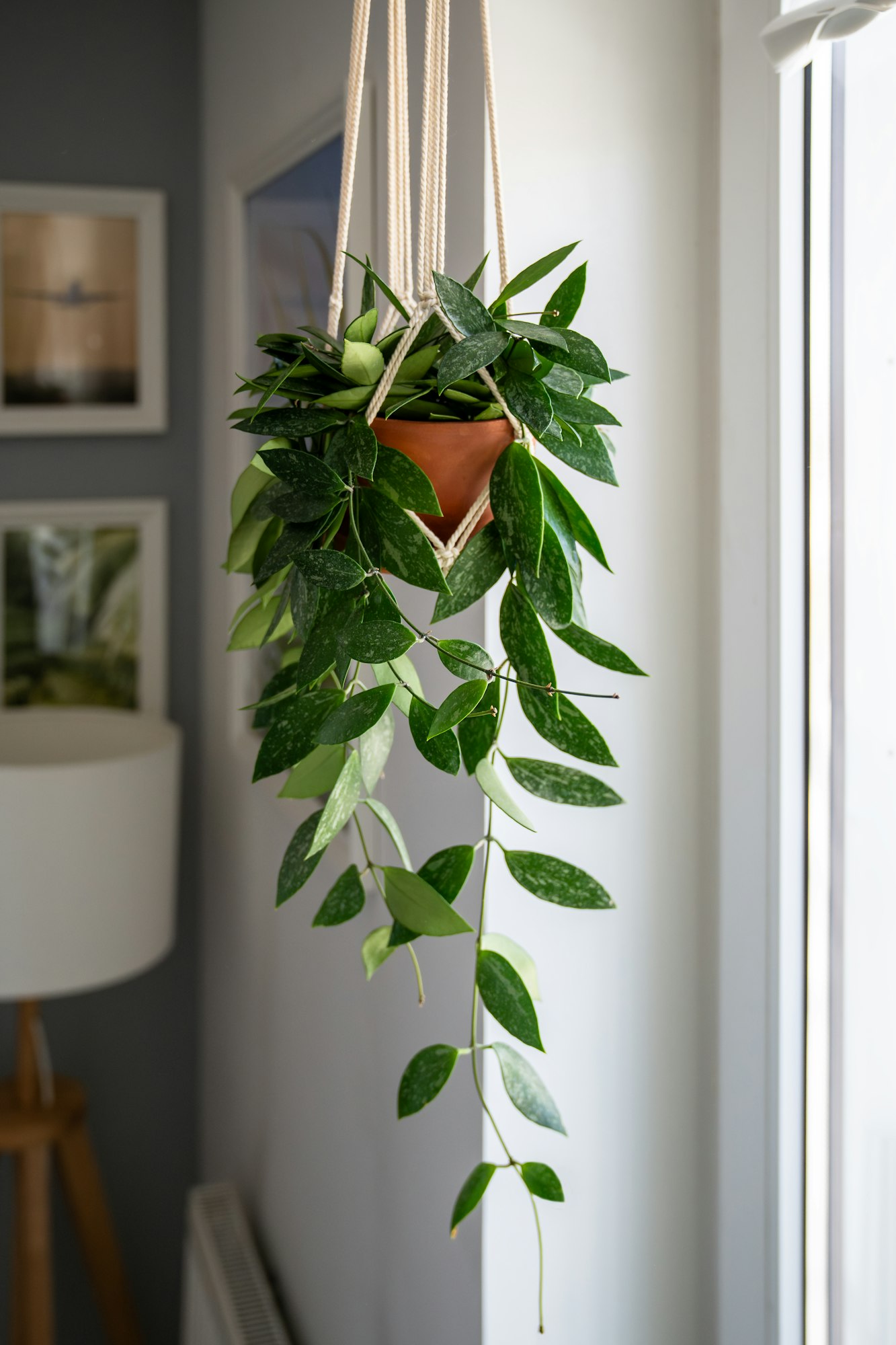
Hoya plants are notable for their waxy, glossy leaves that can also produce sweet-smelling, star-shaped flowers under the right conditions. They come in various forms, some with variegated leaves. Hoyas thrive in bright, indirect light and require well-draining soil. Allow the soil to dry out between waterings. They are relatively drought-tolerant and do well with less frequent watering.
18. Maranta (Red Prayer Plant)
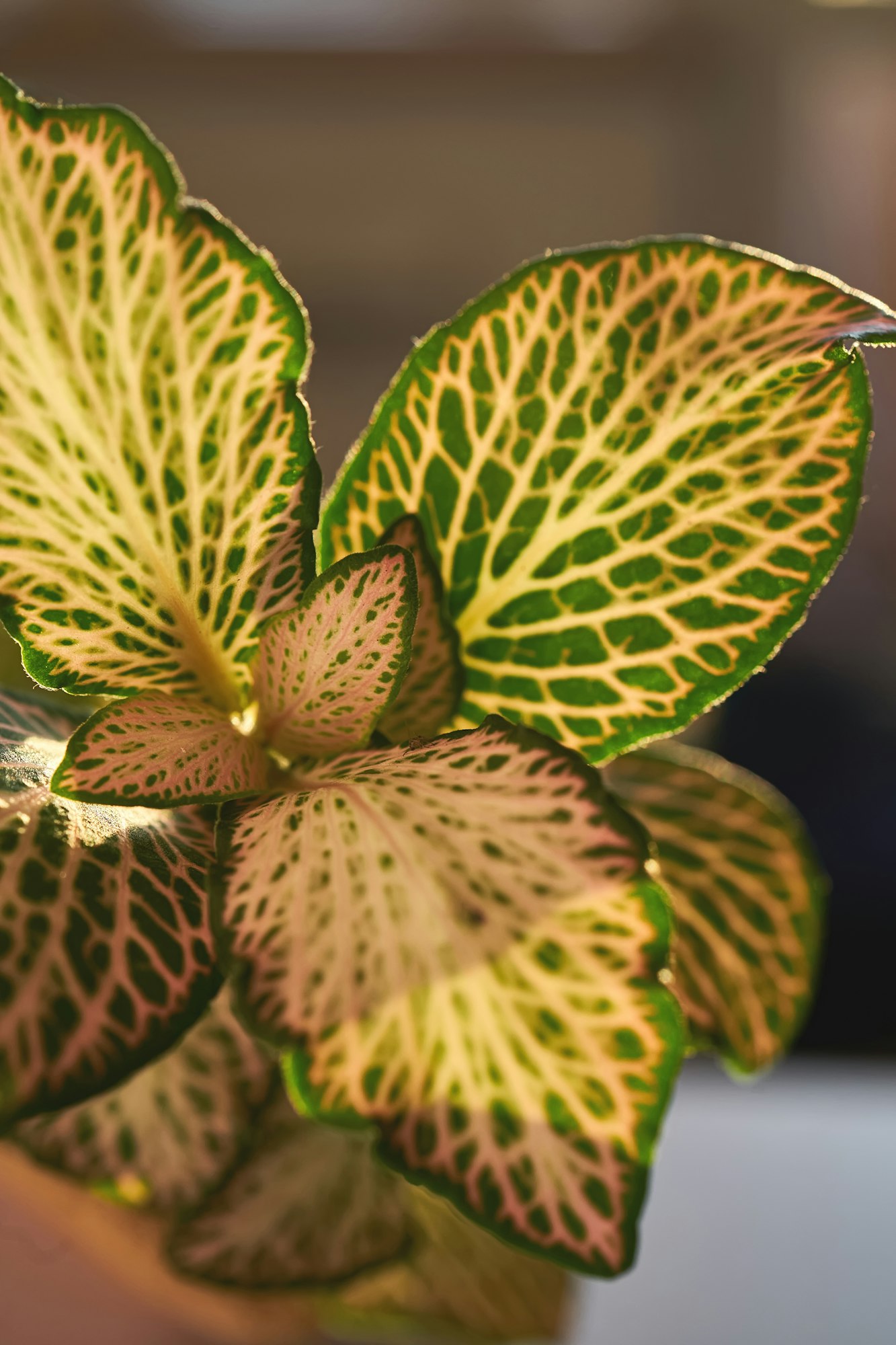
The Red Prayer Plant is celebrated for its striking leaf patterns, featuring deep red veins against a bright green background. The leaves fold upward at night, which adds an interesting dynamic to its display.
Maranta thrives in medium to bright indirect light and requires high humidity. Keep the soil consistently moist but not waterlogged. Misting regularly can help meet its humidity needs.





